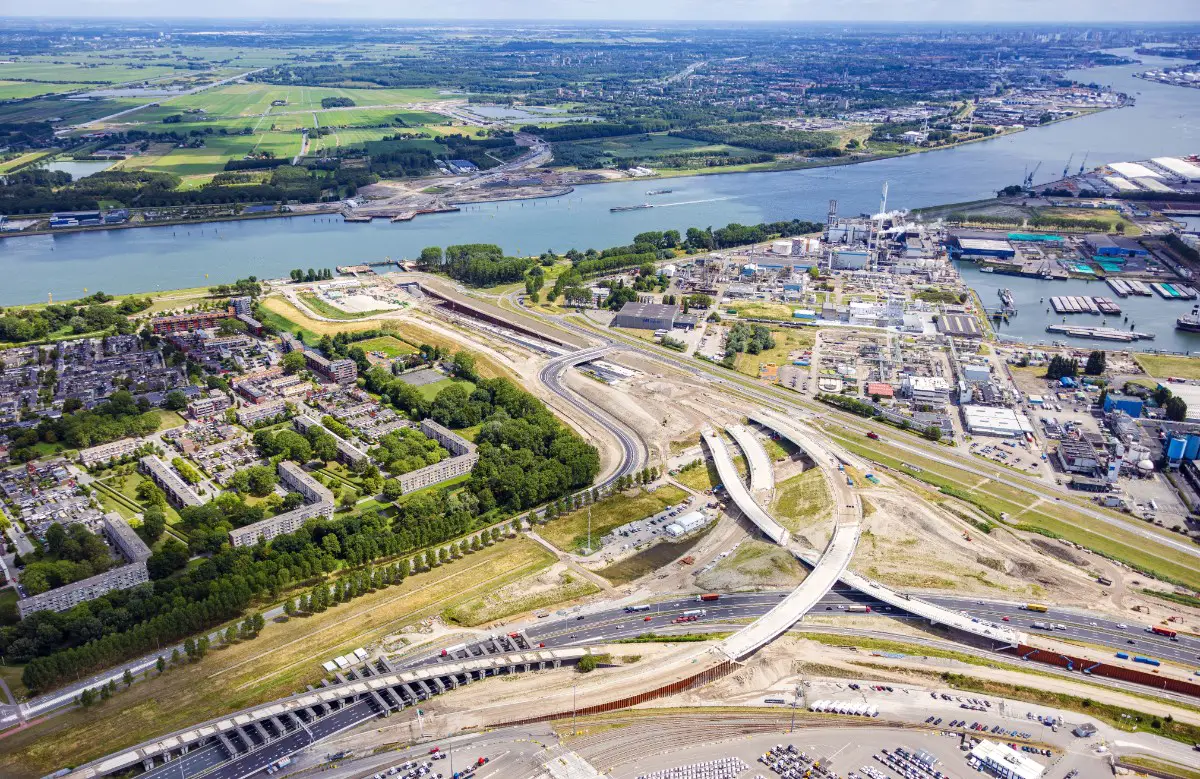Blankenburg connection (A24 national highway) gets automatic toll collection – VIDEO
Blankenburg Link
The Rotterdam region is one of the busiest areas in the Netherlands. Many people live and work there. Because it is so busy, the roads around Rotterdam are very congested and there are often traffic jams. This makes the region less accessible. This problem will be solved – to the extent possible – with a new connection between the A15 and A20 west of Rotterdam: the Blankenburg connection. In other words, the new A24 national highway.
Dive-unders and fly-overs
The Blankenberg connection consists of five sub-projects: Rozenburg Junction, Maas Delta Tunnel, Holland Tunnel, Vlaardingen Junction and the widening of the A20. Several dive-unders have been chosen, with roads becoming almost invisible in the landscape. This will keep the polder beautiful. Above the port area, this is not possible due to underground pipes. There, flyovers over the A15 were chosen. These flyovers are being built on a mountain nicknamed “Blankenberg. The Blankenberg will eventually have a height of 20 meters. In the video below, the complete explanation of the Blankeberg connection.
VIDEO: Blankenburg connection
Automatic toll collection in the Netherlands
There will be tolls on the new A24 trunk road, but in a way that is already found abroad: automatic toll collection. In countries like France and Italy, this is the most normal thing in the world. In the Netherlands, it is still new. What kind of system will we have in the Netherlands? Simple: instead of stopping, the system records the license plate number of each passing vehicle. This form of toll will be introduced when the Blankenburg connection opens. The toll is used to pay off road accelerated. The Netherlands now only has toll collection with toll gates, namely in the Westerscheldetunnel and Kiltunnel. Automatic toll collection is new for the Netherlands.
RDW closes deal with Via Verde
Automatic toll collection is handled through the Portuguese company Via Verde. This company won the tender with the RDW to enable automatic toll collection – also known as free flow tolling. The idea is soon that road users will open an account with Via Verde and enter into what is known as a service agreement at no additional cost. Via Verde will then collect the tolls due in a pre-arranged manner. The RDW expects other private parties to be interested in offering toll services as well. People driving through the Blankenburg Link can also pay their tolls directly and anonymously at the toll collector.

Questions Blankenburg connection
How much traffic will soon cross the new connection?
According to Rijkswaterstaat, “Model calculations performed in the Exploratory Phase show that at low economic growth approximately 74,000 motor vehicles per 24-hour period will travel over the link and at high economic growth approximately 97,000 motor vehicles. These figures do not assume tolls. In the Plan elaboration phase, only high economic growth and tolls were taken into account and then in 2030 about 68,000 motor vehicles use the Blankenburg connection. Only high economic growth has been calculated to visualize the worst case effects for traffic and environment, to make the design as robust as possible.”
For which vehicles is the new Blankenburg connection suitable?
Rijkswaterstaat: “The Blankenburg connection is accessible to cars, trucks, buses and motorcycles.”
How long will the Blankenburg connection be?
Rijkswaterstaat: “The Blankenburg connection is 4.2 km long and runs from the A20 west of Vlaardingen to the A15 on the east side of Rozenburg. Via the Maas Delta Tunnel (about 900m long), the connection passes under the Nieuwe Waterweg/the Scheur, with a land tunnel of about 500m on the north side, the Holland Tunnel. The road link will be designed as a freeway, with a maximum speed of 100 km per hour and three lanes per direction of travel. The A20 will have three lanes per direction of travel, between Kethelplein and the Vlaardingen interchange (A20-A24 Blankenburg connection).”
Is the Blankenburg connection actually necessary?
Rijkswaterstaat: “The Blankenburg connection is necessary to guarantee accessibility, livability and economic activities. In addition to Europe’s largest port complex and Greenport Westland, the Rotterdam region offers space for business services and creative activity. Keeping the Rotterdam region accessible is of great importance for this; the Blankenburg connection makes the desired situation possible. The Blankenburg connection connects the A20 west of Vlaardingen to the A15 on the east side of Rozenburg.”
Learn more: www.blankenburgverbinding.nl

